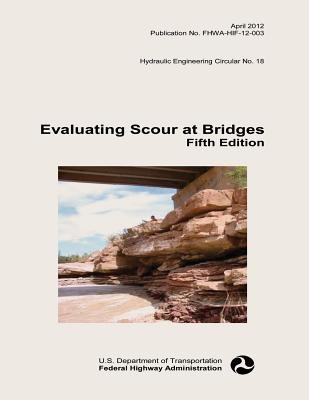
- We will send in 10–14 business days.
- Author: Federal Highway Administration
- Publisher: CreateSpace Independent Publishing Platform
- Year: 2015
- Pages: 342
- ISBN-10: 1508680752
- ISBN-13: 9781508680758
- Format: 21.6 x 28 x 1.8 cm, softcover
- Language: English
- SAVE -10% with code: EXTRA
Reviews
Description
The most common cause of bridge failures is from floods scouring bed material from around bridge foundations. Scour is the engineering term for the erosion caused by water of the soil surrounding a bridge foundation (piers and abutments). The purpose of this document is to provide guidelines for the following: 1. Designing new and replacement bridges to resist scour, 2. Evaluating existing bridges for vulnerability to scour, 3. Inspecting bridges for scour, 4. Improving the state-of-practice of estimating scour at bridges. This document is the fifth edition of HEC-18. It presents the state of knowledge and practice for the design, evaluation and inspection of bridges for scour. There are two companion documents, HEC-20 entitled "Stream Stability at Highway Structures," and HEC-23 entitled "Bridge Scour and Stream Instability Countermeasures." These three documents contain updated material from previous editions and continued research by NCHRP, FHWA, State DOTs, and universities. This fifth edition of HEC-18 also contains revisions obtained from further scour-related developments and the use of the 2001 edition by the highway community. The major changes in the fifth edition of HEC-18 are: expanded discussion on the policy and regulatory basis for the FHWA Scour Program, including risk-based approaches for evaluations, developing Plans of Action (POAs) for scour critical bridges, and expanded discussion on countermeasure design philosophy (new vs. existing bridges). This fifth edition includes: a new section on contraction scour in cohesive materials, an updated abutment scour section, alternative abutment design approaches, alternative procedures for estimating pier scour, and new guidance on pier scour with debris loading. There is a new chapter on soils, rock and geotechnical considerations related to scour. Additional changes include: a new approach for pier scour in coarse material, new sections on pier scour in cohesive materials and pier scour in erodible rock, revised guidance for vertical contraction scour (pressure flow) conditions, guidance for predicting scour at bottomless culverts, deletion of the "General Scour" term, and revised discussion on scour at tidal bridges to reflect material now covered in HEC-25 (2nd Edition).
EXTRA 10 % discount with code: EXTRA
The promotion ends in 20d.04:14:33
The discount code is valid when purchasing from 10 €. Discounts do not stack.
- Author: Federal Highway Administration
- Publisher: CreateSpace Independent Publishing Platform
- Year: 2015
- Pages: 342
- ISBN-10: 1508680752
- ISBN-13: 9781508680758
- Format: 21.6 x 28 x 1.8 cm, softcover
- Language: English English
The most common cause of bridge failures is from floods scouring bed material from around bridge foundations. Scour is the engineering term for the erosion caused by water of the soil surrounding a bridge foundation (piers and abutments). The purpose of this document is to provide guidelines for the following: 1. Designing new and replacement bridges to resist scour, 2. Evaluating existing bridges for vulnerability to scour, 3. Inspecting bridges for scour, 4. Improving the state-of-practice of estimating scour at bridges. This document is the fifth edition of HEC-18. It presents the state of knowledge and practice for the design, evaluation and inspection of bridges for scour. There are two companion documents, HEC-20 entitled "Stream Stability at Highway Structures," and HEC-23 entitled "Bridge Scour and Stream Instability Countermeasures." These three documents contain updated material from previous editions and continued research by NCHRP, FHWA, State DOTs, and universities. This fifth edition of HEC-18 also contains revisions obtained from further scour-related developments and the use of the 2001 edition by the highway community. The major changes in the fifth edition of HEC-18 are: expanded discussion on the policy and regulatory basis for the FHWA Scour Program, including risk-based approaches for evaluations, developing Plans of Action (POAs) for scour critical bridges, and expanded discussion on countermeasure design philosophy (new vs. existing bridges). This fifth edition includes: a new section on contraction scour in cohesive materials, an updated abutment scour section, alternative abutment design approaches, alternative procedures for estimating pier scour, and new guidance on pier scour with debris loading. There is a new chapter on soils, rock and geotechnical considerations related to scour. Additional changes include: a new approach for pier scour in coarse material, new sections on pier scour in cohesive materials and pier scour in erodible rock, revised guidance for vertical contraction scour (pressure flow) conditions, guidance for predicting scour at bottomless culverts, deletion of the "General Scour" term, and revised discussion on scour at tidal bridges to reflect material now covered in HEC-25 (2nd Edition).


Reviews